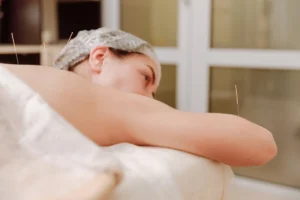
Starting out in the world of acupuncture and dry needling can be both exciting and intimidating, especially for beginners. These ancient healing practices hold promise for treating a variety of ailments and improving overall well-being, but navigating the world of needles and therapies can be intimidating at first. Fear not, for we are here to help you feel confident and empowered as you take your first steps into this transformative realm.
Understanding Acupuncture and Dry Needling
Acupuncture and dry needling are both therapeutic techniques that involve the insertion of thin needles into specific points on the body to stimulate healing and relieve pain. While they share similarities, they differ in their underlying principles and therapeutic goals. Acupuncture, rooted in traditional Chinese medicine, aims to balance the flow of energy, or Qi, within the body’s meridian system. Dry needling, on the other hand, targets muscular trigger points to release tension and promote muscle relaxation.
Preparing for Your First Session
Before your first acupuncture or dry needling session, it’s essential to come prepared both mentally and physically. Wear loose, comfortable clothing that allows easy access to the areas being treated. Arrive well-hydrated and avoid consuming heavy meals or caffeine immediately beforehand, as this can affect your body’s sensitivity to the needles. Most importantly, approach your session with an open mind and a willingness to embrace the experience fully.
Managing Expectations
As with any form of therapy, it’s important to manage your expectations and understand that healing is a gradual process that may require multiple sessions. While some individuals experience immediate relief or noticeable improvements after their first session, others may require more time to see significant results. Be patient with yourself and trust in the expertise of your practitioner to guide you on your healing journey.
Communicating with Your Practitioner
Effective communication with your practitioner is key to ensuring a positive and productive experience. Be sure to share any relevant medical history, concerns, or goals for treatment before your session begins. During the session, don’t hesitate to speak up if you experience discomfort or have any questions or concerns. Your practitioner is there to support you and tailor the treatment to your individual needs.
Aftercare and Self-Care
After your session, prioritize self-care to maximize the benefits of your treatment and support your body’s healing process. Stay hydrated, get plenty of rest, and avoid strenuous activities or excessive stressors that may counteract the effects of the treatment. Pay attention to any post-session recommendations or exercises provided by your practitioner to further enhance your well-being between sessions.
FAQ:
1. Is acupuncture or dry needling painful?
Sensations experienced during acupuncture or dry needling can vary from person to person, but many individuals report feeling minimal to no discomfort during the insertion of needles. Some may experience a slight tingling or dull ache at the insertion site, which typically subsides quickly. If you have concerns about pain or discomfort, be sure to communicate with your practitioner, who can adjust the treatment accordingly.
2. How many sessions will I need to see results?
The number of sessions needed to see results can vary depending on the individual’s condition, goals for treatment, and response to therapy. While some people may experience significant improvements after just a few sessions, others may require more prolonged or frequent treatment to achieve their desired outcomes. Your practitioner will work with you to develop a personalized treatment plan based on your specific needs and circumstances.
3. Are there any side effects or risks associated with acupuncture or dry needling?
Acupuncture and dry needling are generally safe when performed by a qualified and experienced practitioner. However, some individuals may experience mild side effects such as bruising, soreness, or fatigue after treatment. Serious complications are rare but may occur if proper hygiene and technique are not followed. It’s essential to choose a licensed practitioner who adheres to strict safety and sanitation standards to minimize any potential risks.
4. Can acupuncture or dry needling treat my specific condition?
Acupuncture and dry needling have been used to address a wide range of physical and emotional conditions, including pain management, stress reduction, anxiety, digestive issues, and more. While research supports the efficacy of these therapies for a variety of conditions, it is critical to consult with a qualified practitioner to determine whether they are appropriate for your specific needs and to develop a personalized treatment plan that addresses your unique concerns.
In conclusion, embarking on your journey with acupuncture and dry needling can be a transformative experience that opens the door to healing and well-being on multiple levels. By following these pro tips for newcomers and approaching your sessions with an open mind and a willingness to engage fully in the process, you can lay the foundation for a rewarding and empowering healing journey.


Follow Us